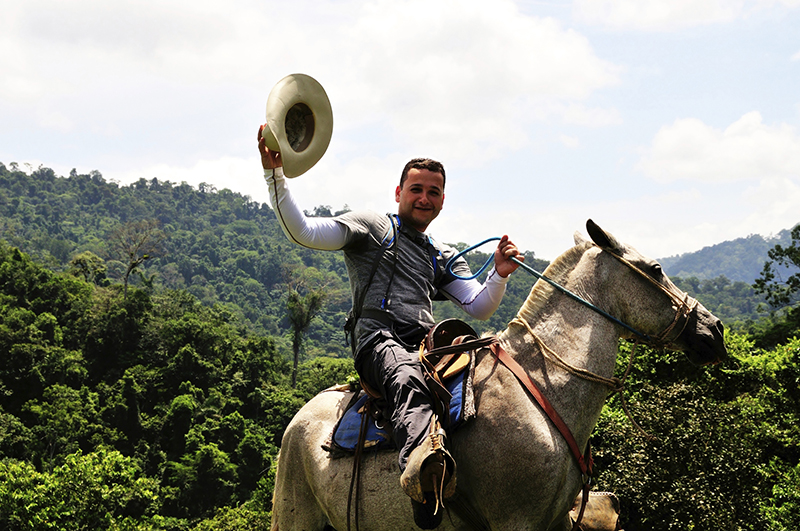While Costa Ricans enjoy high levels of well-being, foreign investors can enjoy high returns in a country that is leveraging its potential as a competitive export base by investing in vital infrastructure

Costa Rica is recognized for its care of the environment and its people, and if there is one word that can truly sum up the Central American nation, it is “happy”. In the New Economics Foundation’s Happy Planet Index, Costa Rica is ranked number one, a result of high life expectancy, high levels of experienced well-being, and a moderate ecological footprint. In Gallup-Healthways Global Well-Being Index, Costa Rica comes second after its neighbour Panama, reflecting the generally high level of happiness in the region.
The country’s socioeconomic development, a “success story in many respects” according to the World Bank, has certainly been a contributing factor to the country’s high level of contentment. Costa Ricans enjoy one of the highest life expectancy levels in the Western hemisphere and one of the most developed welfare systems in the region.
An upper middle-income country, Costa Rica has experienced steady economic growth over the past 25 years. This growth has been supported by the country’s openness to foreign investment, and the country can boast of having one of the highest levels of foreign direct investment per capita in Latin America. Attracted by long-term stability, a strategic location, and a qualified workforce, foreign investors have helped to build a thriving high-value manufacturing industry, with electronic and medical devices amongst the country’s chief exports.
But the two main stalwarts of the economy remain tourism and agriculture. Costa Rica is the world’s largest exporter of pineapples and controls over 80% of the U.S. and European markets. It is the third largest exporter of bananas. Coffee is another important cash crop but to a much smaller extent. Executive Director of the Institute of Coffee (ICAFE) Ronald Peters says the goal of the 200-year-old coffee industry is to double annual production to around 130,000 tons. While this pales in comparison to the big regional producers such as Brazil and Colombia, Costa Rica aims to compete in terms of quality and not quantity.
“We are positioned as producers of gourmet coffee, we are not producers of volume,” says Mr. Peters, who adds that a great effort is being made by ICAFE to create an industry as “profitable as the pineapple and banana industries”.
Costa Rica’s growth has been led by exports of agricultural goods and electronics, but lack ing adequate infrastructure has somewhat hindered further progress and affected competiveness. This is why the government signed a concession agreement with Dutch company APM Terminals, which will invest $1 billion in the upgrading of the country’s main port in the Caribbean province of Limón.
“Limón has been the forgotten province and this new project will be a cornerstone of the revitalization of not just the city of Puerto Limón, but also the whole province,” says Managing Director of APM Terminals Paul Gallie, who stresses “the need for proper facilities that are able to take larger vessels so that the exporters can participate in the global market with economies of scale.”
The company’s General Manager, Rogelio Douglas, adds that the development of Puerto Limón “will represent an important contribution for the country and the Limón region. It is expected that this terminal will be key to improving competitiveness in Costa Rica’s international trade and lead the region’s development towards a logistical center and distribution node to America’s and Europe’s large markets.”
The signing of the concession agreement with APM was overseen by National Concessions Council (CNC in Spanish), whose mandate is to promote and encourage public-private partnerships. The Technical Secretary of the CNC, Jorge Mora Gutiérrez, states that aside from Puerto Limón, the concessions law has “allowed private participation in the development of the country’s main airport, as well as roads and other works.”
With $60 billion of infrastructure investment required through 2020, private participation is a must, and Mr. Gutiérrez identifies opportunities in water, sewage and the construction of public buildings, schools and hospitals as opportunities for U.S. investors. “For private participation and particularly the American one, Costa Rica represents a great destination,” he says.
One of Costa Rica’s greatest strengths is an education system that supports both the traditional economy, by adding value, and a knowledge-based one.
World-renowned research in science and technology
Already the most prestigious institution of higher learning in Central America, the University of Costa Rica (UCR) is quickly gaining global recognition for its excellence in science and technology research on a global scale, and is helping to boost competitiveness and attract investment.
“For decades, we have been making sustained investment to have tools to conduct and develop research of the highest level,” says Rector of UCR, Henning Jensen. “We want to be at the height of international science, therefore we want to make contributions that are renowned by our academic and scientific peers worldwide.”
The university has committed itself to train Costa Rica’s students in the most sophisticated scientific advances and providing them with the best technology. “In various scientific disciplines, such as nanotechnology or nanoscience, we are making similar investments like the best labs in the world,” explains Mr. Jensen. “At the same time, we are training in new areas of applied sciences like robotics and biomedical technologies; areas of very high demand.”
With over 200 North American and European science and technology companies having recently been attracted to Costa Rica, UCR has not only been gaining a reputation in the academic sphere, but also with big businesses looking to tap into a highly skilled and educated workforce.
“UCR has made an enormous contribution in the country’s productive development,” says Mr. Jensen. In helping to boost the country’s economic competitiveness and draw foreign investment, the university has also become a regional leader in such areas as biodiversity, engineering, medical investigation and poisonous snakes studies (which has helped Costa Rica become a global exporter of antivenoms).
0 COMMENTS